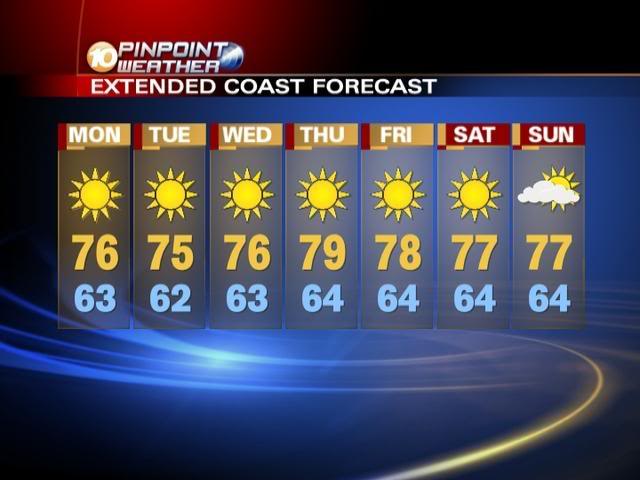I did the majority of my flight training in San Diego, CA. Yes, lucky me. Not only did I get to fly in such a beautiful area but I always had a killer tan. After my first week of ground school, my instructor had me get my first over-the-phone weather briefing. That day in class we had just gone over how to obtain a weather briefing, so logically I figured he was testing me to see how much of the information I absorbed and retained. Over the next couple of days before each flight he had me do the same. I began to wonder…does this guy not look outside? It’s still 80°F and sunny, not a cloud in the sky, just like yesterday, and the day before that. It wasn’t until our discussion on regulations that I realized, this was an actual requirement for flying. The FAA requires you to obtain weather information if you plan on flying outside the vicinity of the airport. As training continued, I began to realize the importance and responsibility of obtaining accurate weather information no matter how sunny and clear it appears to be and not just because it’s a regulation.

I bring this personal story up because today I want to discuss 14 CFR §91.103, “Preflight action”, which reads:
“Each pilot in command shall, before beginning a flight, become familiar with all available information concerning that flight.”
Basically as pilot-in-command (PIC) you cannot just hop in the plane and go. It doesn’t matter if you’ve conducted the same flight 100 times in the past; you still need to familiarize yourself with all available information for this particular flight. The regulation goes on to further break down exactly what information you must obtain:
(a) For a flight under IFR or a flight not in the vicinity of an airport, weather reports and forecasts, fuel requirements, alternatives available if the planned flight cannot be completed, and any known traffic delays of which the pilot in command has been advised by ATC;
(b) For any flight, runway lengths at airports of intended use, and the following takeoff and landing distance information:
(1) For civil aircraft for which an approved Airplane or Rotorcraft Flight Manual containing takeoff and landing distance data is required, the takeoff and landing distance data contained therein; and
(2) For civil aircraft other than those specified in paragraph (b)(1) of this section, other reliable information appropriate to the aircraft, relating to aircraft performance under expected values of airport elevation and runway slope, aircraft gross weight, and wind and temperature.
This is essentially the regulation in its entirety. To make this regulation little easier to understand let’s map it out in a more logical way.
Today I plan on conducting a flight as PIC from Bellingham Airport (BLI) in Northern Washington state to Seattle’s Boeing Field (BFI). Based solely off 14 CFR §91.103, I would need to obtain and determine the following (and from the following sources):
- Weather reports and forecasts (800-WX-BRIEF or www.1800wxbrief.com)
- Fuel requirements (POH/AFM for the aircraft I’m flying)
- Alternate airports (Sectionals, TAC, and/or Airport/Facility Directory)
- Known traffic delays (NOTAMs, TFRs, ATIS)
- Runway length at airports of intended use (Airport/Facility Directory)
- Takeoff distance (POH/AFM + weather briefing)
- Landing distance (POH/AFM + weather briefing)
My first order of business is to obtain weather reports and forecasts. The regulation does not specifically state, but this should include information for arrival and departure points as well as en route. Next I need to determine fuel requirements. How much fuel is needed to get to BFI? I want to account for possible weather, known traffic delays and be sure to meet VFR day or night fuel reserve regulations. With fuel in mind, I want to determine availability of alternate airports. You always want to have a backup plan if for some reason you can no longer land at your planned destination. Just like you would for you destination airport, become familiar with any alternate airports you may choose. This leads us into runway lengths at airports of intended use. We want to gather this data for both BLI and BFI. It’s also a good idea to have this information on hand for the alternate airport(s) we have chosen. Lastly, we need to determine performance for takeoff and landing distances. This is to ensure we have selected airports that have sufficient runway lengths. Remember, performance data can change due to environmental conditions, so an airport that might have sufficient runway length one day may not the following day (think wind, density altitude, runway surface conditions, etc).
As you can see there is a lot of information you need to gather before each flight. One way to keep track of all this information is to use an ASA Flight Planner form. In addition to the actual flight plan, you have a note section to jot down performance data and a terminal information section to list runway lengths and other airport information such as communication frequencies. On the backside is where you have a dedicated section for Preflight Pilot Checklist, Weight and Balance, and the ICAO Flight Plan form.
Now, by no means am I saying this is all that needs to be accomplished prior to taking flight, this is just the minimum as outlined in 14 CFR §91.103.
So when your instructor tells you to do something, there’s usually a pretty good reason behind it.




